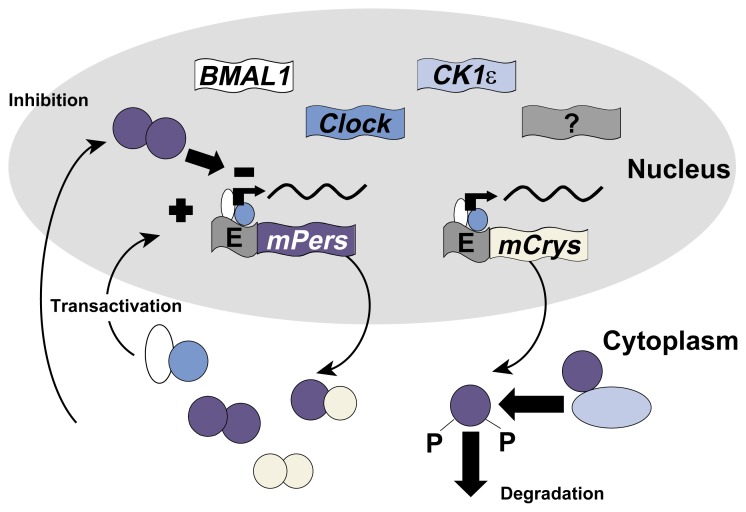Figure 2.
Schematic representation of the regulation of genes believed to be involved in the circadian clock. BMAL1, Clock, CK1ɛ, mPer, and mCry all are circadian clock genes identified in mice. (Several variants exist of the mPer and mCry genes.) In the cell’s nucleus, the genetic information encoded in these genes is converted into a carrier molecule called mRNA (black wavy lines), which is transported into the fluid within the cell (i.e., the cytoplasm). There, the mRNA is used to generate the protein products encoded by the circadian clock genes (circles and ovals with colors corresponding to the respective genes). Some of these proteins regulate the activity of certain clock genes by binding to “molecular switches” (i.e., E boxes) located in front of those genes. This is called a feedback cycle. Thus, the BMAL1 and clock proteins promote activation of the Per and mCry genes, whereas Per proteins inhibit activation of those genes. The 24-hour cycling comes about as the BMAL1 and Clock proteins induce increased production of Per and Cry proteins. As Pers and Crys accumulate, they inhibit their own synthesis, and the protein levels decline. CK1ɛ protein also helps to regulate Clock protein levels by destabilizing Per protein.
NOTE: BMAL1 = brain and muscle ARNT-like 1; CK1ɛ = caseine kinase 1 epsilon; mPer = mouse period; mCry = mouse cryptochrome.

